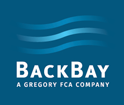At the height of the pandemic last year, banks both small and large were mostly seen as the “good guys” as their customers struggled to get through an unprecedented time. It was a complete 180 degree reversal from the 2008 financial crisis. Banks suddenly postponed credit payments with no penalties, increased their digital presence as branches remained closed, and were the go-to sources for PPP loans that kept small businesses afloat in a time of great uncertainty. As a result, banks came out smelling like roses on the other side of the worst parts of the pandemic. But how does the industry capitalize on that sentiment going forward?
That was a key question bank executives sought to answer in Chicago in September at the Bank Customer Experience Summit. I was in attendance to serve as a panelist and moderator for a couple of panel discussions, but I also took the time to sit in on other sessions to get a sense of where the banking industry stands today. Interestingly, it’s almost in the same position it was in prior to the onset of the pandemic, the only real difference being the digitization of banking services that have been accelerated over the last 18 months. And it’s part of the reason why the industry is having an identity crisis of sorts at the moment.
It’s an identity crisis because banks are serving a dual purpose as both partners, and in some cases, technology innovators. For as much market share as fintechs have gained over the years, they still largely depend on banks to provide behind-the-scenes support and hold deposit accounts. Bank executives at this particular conference brought up the success of the neobanks/challenger banks, but were quick to point out how banks work behind the scenes to make it all happen. For example, Chime might be worth $25 billion, but still works with The Bancorp Bank and Central National Bank to hold customers’ deposit. As one executive put it: fintechs do need banks; it’s an ecosystem that depends on each other.
But what the banking industry needs to do at the moment is figure out how to best serve its customers (innovation with technology and services) while at the same time being ok with those same customers using fintechs to meet various needs. I was intrigued by the way Fairfield County Bank in Connecticut is handling this situation.
Stephen Wooters, the EVP and CMO for digital banking and payments at Fairfield County Bank, described during a session I participated in on mobile banking how his team developed a mobile banking experience that was on par, and he believed in some cases exceeded, offerings from the top national players. The bank added a digital money manager, a credit score tool, and Zelle integration to its online/mobile banking experience. The digital money manager and credit score tool are essentially clones of Mint and Credit Karma. But now Fairfield County’s customers can use one app instead of three for these services. Banks cloning fintech apps might not necessarily be “innovative,” but Fairfield County Bank’s mobile app ranks well with consumers alongside the likes of Bank of America and Chase.
While Wooters spurred Fairfield County Bank to think a little bigger, not all community banks have that luxury. In fact, the consensus is that smaller institutions can’t be everything to everyone, and that’s ok. Let’s take the buy now, pay later craze as an example.
BNPL chatter exploded over the summer. Square is in the process of buying Australia’s Afterpay for $29 billion. Amazon is in the process of integrating Affirm into its checkout cart, bringing BNPL capabilities to millions of new consumers. PayPal eliminated fees on BNPL purchases while Visa announced it is developing a BNPL product. Banks on the surface are nowhere to be found in this conversation. While Cross River Bank is originating the loans for BNPL fintechs, financial institutions are sitting on the sidelines. And that might be ok.
Michelle Shelton, Chief Experience Officer, Great Lakes Credit Union said during the bank executive roundtable I moderated that her institution isn’t looking at BNPL at all. “We don’t necessarily have to be all these things to all our customers,” she said. It’s a sentiment shared throughout the summit. But is it necessarily the right one?
Alex Sion said it best at the final keynote for the summit. Sion helped start Moven, the original challenger bank. He currently works for Citi Ventures as the Head of Venture Incubation for Global Consumer Banking. Earlier in the summit, an executive spoke about how any brand these days can essentially offer financial services. “No one is staying in their lane these days and that needs to be kept in mind with product development,” Sion said. “Differentiation is critical.” This is something banks should keep in mind as they try to figure out who they are for their customers going forward. The industry is in a good spot right now. Keeping pace with customers’ needs will keep those good vibes going.
Conference photo credit: Networld Media Group


